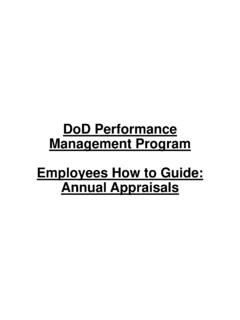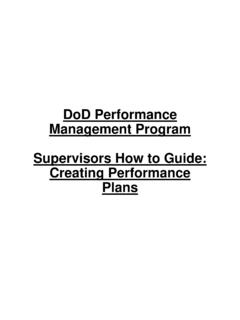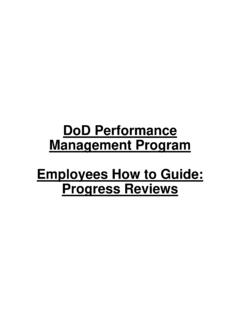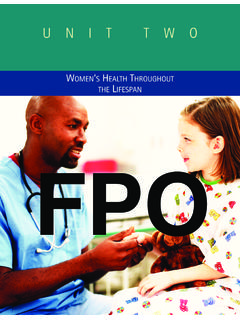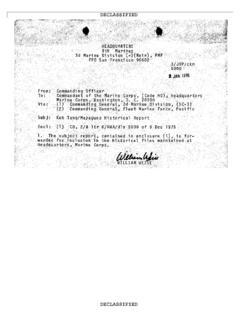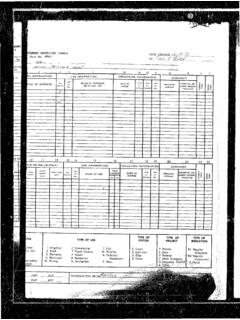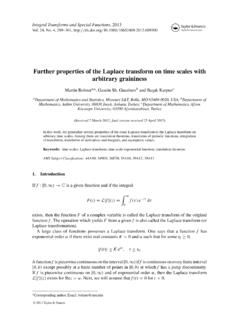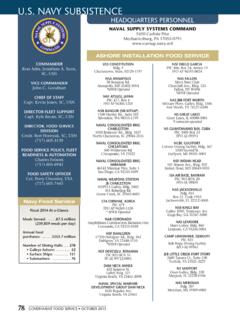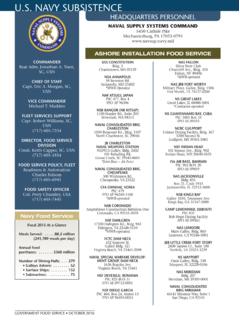Transcription of Health Promotion, Risk Reduction, and Suicide Prevention
1 Department of the ArmyPamphlet 600 24 Personnel-GeneralHealthPromotion,RiskRed uction, andSuicidePreventionHeadquartersDepartme nt of the ArmyWashington, DC14 April 2015 UNCLASSIFIEDSUMMARY of CHANGEDA PAM 600 24 Health promotion , Risk reduction , and Suicide PreventionThis major revision, dated 14 April 2015--o Reorganizes the content of chapters 2, 3, and 4 to facilitate clarity ofcontent (chaps 2, 3, 4).o Adds guidance on the HQDA Specialized Suicide Augmentation Response Team/Staff Assistance Team (para 2-1e).o Introduces the use of the DA Form 7747 (Commander s Suspected Suicide EventReport) as an official Army form and replaces all references to CSSER(Commanders Suspected Suicide Event Report) with the DA Form 7747 (para 2-9dand throughout).o Introduces "ACE-SI" as the appropriate nomenclature for ACE suicideintervention training and provides guidance on its use and applicability(para 4-5 and throughout).
2 O Implements the use of DD Form 2996 (Department of Defense Suicide EventReport) as an official DOD form and replaces all references to DODSER(Department of Defense Suicide Event Report), with the DD Form 2996 (para 5-2and throughout).o Replaces chapter 9 and removes the accompanying appendix, Army Campaign Planfor Health promotion , Risk reduction and Suicide Prevention compliancechecklist (chap 9 and app G).o Adds additional resources to appendix D and removes Military OneSource fromthe list of hotlines (app D).o Replaces the term "DA Civilians" with "Army Civilians" (throughout).HeadquartersDepartment of the ArmyWashington, DC14 April 2015 Personnel-GeneralHealth promotion , Risk reduction , and Suicide Prevention *Department of the ArmyPamphlet 600 24H i s t o r y . T h i s p u b l i c a t i o n i s a m a j o u m m a r y . T h i s p a m p h l e t e x p l a i n s t h eprocedures for Health promotion , risk re-duction, and Suicide Prevention efforts tomitigate high-risk This pamphlet applies tot h e A c t i v e A r m y , t h e A r m y N a t i o n a lGuard/Army National Guard of the UnitedStates, and the Army Reserve, unlessotherwise and exception h e p r o p o n e n t o f t h i s p a m p h l e t i s t h eDeputy Chief of Staff, G 1.
3 The propo-nent has the authority to approve excep-tions or waivers to this pamphlet that areconsistent with controlling law and regu-lations. The proponent may delegate thisapproval authority, in writing, to a divi-sion chief within the proponent agency orits direct reporting unit or field operatingagency, in the grade of colonel or thecivilian equivalent. Activities may requesta waiver to this pamphlet by providingjustification that includes a full analysis oft h e e x p e c t e d b e n e f i t s a n d m u s t i n c l u d ef o r m a l r e v i e w b y t h e a c t i v i t y s s e n i o rlegal officer. All waiver requests will bee n d o r s e d b y t h e c o m m a n d e r o r s e n i o rleader of the requesting activity and for-warded through their higher headquarterst o t h e p o l i c y p r o p o n e n t.
4 R e f e r t o A R25 30 for specific n t e r i m c h a n g e s . S u g g e s t e d i m -provements. Users are invited to sendc o m m e n t s a n d s u g g e s t e d i m p r o v e m e n t so n D A F o r m 2 0 2 8 ( R e c o m m e n d e dC h a n g e s t o P u b l i c a t i o n s a n d B l a n kForms) directly to Deputy Chief of Staff,G 1 (DAPE HRI), 200 Army Pentagon,Washington, DC 20310 0300. CommitteeManagement. AR 15 1 requires the pro-p o n e n t t o j u s t i f y e s t a b l i s h i n g / c o n t i n u i n gc o m m i t t e e ( s ) , c o o r d i n a t e d r a f t p u b l i c a -tions, and coordinate changes in commit-tee status with the Army Resourcesand Programs Agency, Department of theA r m y C o m m i t t e e M a n a g e m e n t O f f i c e(AARP ZA), 9301 Chapek Road, Build-ing 1458, Fort Belvoir, VA 22060 , if it is determined that an estab-lished "group" identified within this regu-lation, later takes on the characteristics ofa committee, as found in the AR 15 1,t h e n t h e p r o p o n e n t w i l l f o l l o w a l l A R1 5 1 r e q u i r e m e n t s f o r e s t a b l i s h i n g a n dcontinuing the group as a This pamphlet is availablein electronic media only and is intendedfor command levels C, D, and E for theActive Army, the Army National Guard/A r m y N a t i o n a l G u a r d o f t h e U n i t e dStates, and the Army (Listed by paragraph and page number)
5 Chapter 1 Introduction, page 1 Purpose 1 1, page 1 References 1 2, page 1 Explanation of abbreviations and terms 1 3, page 1 Chapter 2 Key Roles, Functions, and Structure, page 1 The Army Suicide Prevention Program 2 1, page 1 Army Suicide Prevention Program strategy 2 2, page 2 Leadership 2 3, page 2 Commanders 2 4, page 2 Soldiers 2 5, page 2 First-line supervisors 2 6, page 2*This pamphlet supersedes DA Pam 600 24, dated 17 December PAM 600 24 14 April 2015iUNCLASSIFIEDC ontents ContinuedChaplains 2 7, page 2 Military Family Life Consultants 2 8, page 3 Criminal Investigation Command commanders or special agents in charge of the supporting Army CriminalInvestigation Command element 2 9, page 3 Line of duty investigating officers 2 10, page 3 Community Health promotion Council 2 11, page 3 Suicide Prevention Task Force 2 12, page 3 Suicide Prevention Task Force functions 2 13, page 4 Risk Management Team 2 14, page 5 Suicide Response Team 2 15, page 5 Other programs, entities, resources, and personnel 2 16, page 7 Reporting 2 17, page 7 Chapter 3 Prevention , page 8 Suicide Prevention 3 1, page 8 Factors contributing to Suicide 3 2, page 8 Life skills and resiliency 3 3, page 8 Stigma reduction 3 4, page 9 Awareness 3 5, page 9 Strategic communication plan 3 6, page 10 Chapter 4 Intervention, page 11 Suicide intervention 4 1, page 11 Risk factors and warning signs 4 2, page 11 Confidential services 4 3, page 12 Prevention and Intervention screening 4 4, page 12 Ask, Care.
6 Escort Suicide Prevention training 4 5, page 12 Unit Watch 4 6, page 13 Additional considerations 4 7, page 13 Chapter 5 Postvention, page 14 General 5 1, page 14 Army Suicide behavior surveillance 5 2, page 15 Chapter 6 Geographically-Dispersed Soldiers, page 16 Geographically-dispersed Soldiers 6 1, page 16 Case management for Reserve Component high-risk Soldiers 6 2, page 17 Collaboration 6 3, page 17 National, state, and local support 6 4, page 17 Suicide incident reporting 6 5, page 17 Chapter 7 Deployment, page 17 Introduction 7 1, page 17 Deployment cycle support 7 2, page 17 Family support during the deployment cycle support process 7 3, page 18 Deployment Health Assessment Program execution during the deployment cycle 7 4, page 18 Chapter 8 Family Member Suicide Prevention , page 19 Introduction 8 1, page 19 Education awareness services 8 2, page 19iiDA PAM 600 24 14 April 2015 Contents ContinuedFamily life support 8 3, page 19 Chaplain support 8 4, page 20 Chapter 9 Database and/or Information Sharing, page 20 Introduction 9 1, page 20 Prevention 9 2, page 20 Intervention 9 3, page 21 Postvention 9 4, page 21 Digital and/or electronic resources 9 5, page , page Analysis Reviews, page s Policy Letter, page , page 34 Table ListTable B 1: Lethality of Suicide behavior rating scale, page 27 Figure ListFigure C 1: Commander s policy letter - sample, page 33 GlossaryiiiDA PAM 600 24 14 April 2015 Chapter 1 Introduction1 1.
7 PurposeThis pamphlet sets forth procedures for establishing Health promotion , risk reduction , and Suicide Prevention efforts. Itprovides holistic guidance to improve the physical, behavioral, spiritual, environmental, and social Health of Soldiers,Army Civilians, and their 2. ReferencesRequired and related publications and prescribed and referenced forms are listed in appendix 3. Explanation of abbreviations and termsAbbreviations and special terms used in this pamphlet are listed in the 2 Key Roles, Functions, and Structure2 1. The Army Suicide Prevention Programa. The Army Suicide Prevention Program (ASPP), a proponent of Deputy Chief of Staff, G 1 (DCS, G 1), has anArmywide commitment to provide resources for Suicide intervention skills, Prevention , and follow-up in an effort toreduce the occurrence of suicidal behavior across the Army enterprise.
8 The ASPP manager also serves as a member ofthe Department of Defense (DOD) Suicide Prevention and Risk reduction Committee and subcommittees to ensure theASPP is aligned with the Defense Centers of Excellence. The ASPP develops initiatives to tailor and target policies,programs, and training in order to mitigate risk and behavior associated with Suicide . A function of the ASPP is totrack demographic data on suicidal behaviors to assist Army leaders in the identification of trends. The goal is tominimize suicidal behavior by reducing the risk of Suicide for Active Army and Reserve Component Soldiers, ArmyCivilians, and Army Family members. The ASPP establishes a community approach to reduce Army suicides throughthe function of the Community Health promotion Council (CHPC). The CHPC integrates multidisciplinary capabilitiesto assist commanders in implementing local Suicide Prevention programs, and establishes the importance of earlyidentification of, and intervention with, problems that detract from personal and unit readiness.
9 The ASPP has threeprincipal phases or categories of activities to mitigate the risk and impact of suicidal behaviors: Prevention , interven-tion, and Prevention focuses on preventing normal life stressors from turning into life crises. Prevention programmingfocuses on equipping the Soldiers, Army Civilians, and Family members with coping skills to handle overwhelminglife circumstances. Prevention includes early screening to establish baseline behavioral Health and to offer specificremedial programs before dysfunctional behavior occurs. Prevention is dependent upon caring and proactive unitleaders and managers who make the effort to know their personnel, including estimating their ability to handle stress,and who offer a positive, cohesive environment which nurtures, and develops positive life-coping skills. These gatekeepers serve as the first line of defense to mitigate risk (see glossary for gatekeeper explanation).
10 Preventionplays a crucial role in mitigating issues before intervention becomes Intervention includes alteration of the conditions that produced the current crisis, treatment of underlying psychi-atric disorder(s) that contributed to suicidal thoughts, and follow-up care to assure problem resolution. This includesmeasures taken to ensure safe environments, to include the use of a buddy system or Unit Watch. Commanders play anintegral part during this phase, as it is their responsibility to ensure access to appropriate Health care and ensure thesafety of assigned Postvention is required when an individual has attempted or completed a Suicide . After an attempt, commanders,noncommissioned officers (NCOs), and installation gatekeepers should take steps to secure and protect such individualsbefore they can cause additional harm to themselves or harm others.

